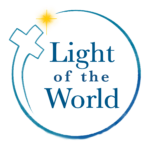Frequently Asked Questions
Do I have to be a native speaker of English to teach?
No. Some of the best English teachers are not native speakers. We can equip you to teach if you are fluent in English.
How much do the materials cost?
All of our digital materials are free to you in PDF, PowerPoint, and video formats. Also, paperback books are available for a reasonable price at Amazon.
Do I have to be certified as TESOL (Teacher of English to Speakers of Other Languages) or TEFL (Teacher of English as a Foreign Language) to teach at my church?
No, our materials are professionally designed for non-professional teachers. They have detailed teaching instructions and answers for each slide.
Are need-based scholarships available?
Yes, you may apply for a need-based scholarship when you register for training.
What level are the materials?
Our lessons are aligned with the internationally recognized CEFR levels. We now have lessons for level A1 (Beginning) A2 (High-beginning) and some B1 (Intermediate). We are creating more LOTW lessons each month and can provide other resources for beginning through advanced learners.
How can we listen to the audio for the lessons?
You can listen to the audio narration and songs on YouTube, or by downloading the PowerPoint lessons and clicking the audio icons.
How long does it take to teach each unit?
Each unit contains about 2 hours of class instruction material and 1-2 hours of homework for learners to do between classes.
Do I need to speak the same language as my learner to teach English?
No. We teach English in English. This helps the learners learn faster. By using gestures, pictures, objects, and local language Bibles, learners begin to understand and speak English from the first lesson.
Which level of Light of the World is right for my learners?
The A1 (Beginner) level is for:
- Learners who are familiar with the English-style (Latin) alphabet. They can already read and write in a language such as Spanish, French, or Swahili.
- They may not speak any English or just have a very small bank of words and/or phrases e.g. “hello” and “goodbye”
- They may only be able to answer very basic questions about themselves e.g. “What’s your name?” and “Where are you from?”
The A2 (High Beginner) level is for:
- Learners who can understand and use familiar everyday expressions and basic everyday phrases.
- They know some basic vocabulary and can answer simple questions about the weather, colors, days of the week, work, family, or clothing.
The B1 (Intermediate) level is for:
- Learners who can already speak in short sentences on basic topics.
- They can read and understand the main points of simple text or slow conversation about familiar topics.
What is the difference between ESL, EFL, ELL and TESOL?
There are many acronyms to describe English learning and teaching.
- ESL is English as a Second Language, this is a popular term and even used to describe learners who already speak several languages.
- EFL is English as a foreign language. EFL often describes language learning that takes place in a non-English speaking country.
- ELL stands for English language learning.
- TESOL is Teaching English to Speakers of Other Languages.
